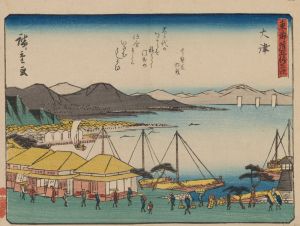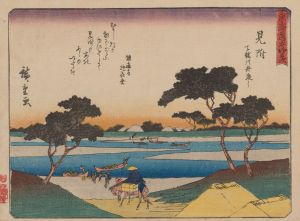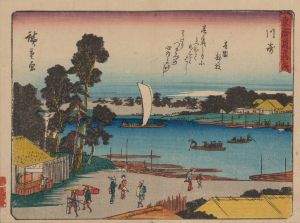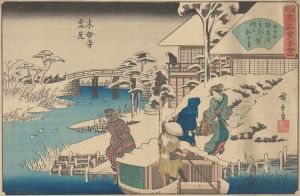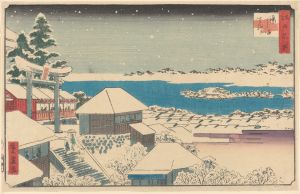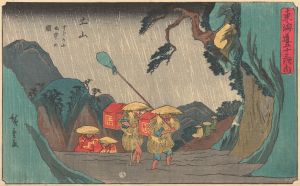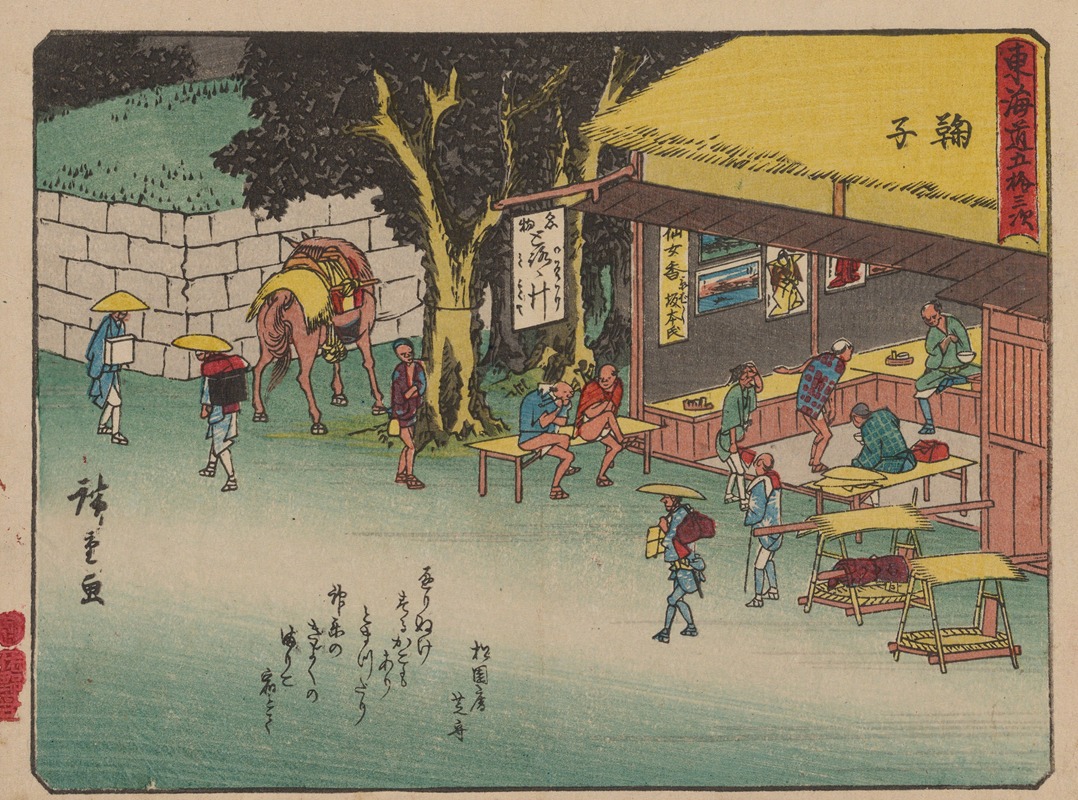
Tokaido gojusantsugi, Pl.21
A hand-painted replica of Andō Hiroshige’s masterpiece Tokaido gojusantsugi, Pl.21, meticulously crafted by professional artists to capture the true essence of the original. Each piece is created with museum-quality canvas and rare mineral pigments, carefully painted by experienced artists with delicate brushstrokes and rich, layered colors to perfectly recreate the texture of the original artwork. Unlike machine-printed reproductions, this hand-painted version brings the painting to life, infused with the artist’s emotions and skill in every stroke. Whether for personal collection or home decoration, it instantly elevates the artistic atmosphere of any space.
Andō Hiroshige, a renowned Japanese ukiyo-e artist of the Edo period, is celebrated for his landscape prints and his series "The Fifty-three Stations of the Tōkaidō" (Tōkaidō Gojūsan-tsugi). This series, created following Hiroshige's journey along the Tōkaidō road, captures the scenic beauty and cultural significance of the route that connected Edo (modern-day Tokyo) to Kyoto. The series consists of 55 prints, including the starting point at Nihonbashi, the 53 stations, and the terminus at Kyoto.
Plate 21 of this series, often referred to as "Tokaido gojusantsugi, Pl.21," depicts the station of Mariko. Mariko, known for its picturesque setting, was a small post town located in what is now part of Shizuoka City in Shizuoka Prefecture. This station was famous for its tororo-jiru, a yam soup that travelers often enjoyed. Hiroshige's depiction of Mariko captures the essence of this culinary tradition and the tranquil environment of the area.
In the print, Hiroshige illustrates a serene scene with travelers stopping at a tea house to enjoy a meal. The composition is characterized by its delicate balance of human activity and natural scenery, a hallmark of Hiroshige's style. The travelers, depicted in traditional Edo-period attire, are shown in the foreground, engaging with the local hosts. This interaction highlights the hospitality and cultural exchanges that were common along the Tōkaidō road.
The background of the print features rolling hills and lush vegetation, typical of the Mariko area. Hiroshige's use of color and line work effectively conveys the peaceful atmosphere and the gentle topography of the region. The print is a fine example of Hiroshige's ability to blend human elements with nature, creating a harmonious and inviting scene.
Hiroshige's "The Fifty-three Stations of the Tōkaidō" series was highly popular during his lifetime and remains influential in the art world today. His work not only provides a visual record of the Tōkaidō road and its stations but also offers insight into the daily life and culture of the Edo period. The series is celebrated for its innovative compositions, use of perspective, and vibrant colors, which have inspired countless artists and continue to captivate audiences worldwide.
The Mariko print, like others in the series, reflects Hiroshige's keen observation and artistic skill. His ability to capture the subtleties of light, weather, and human interaction has made his work timeless. The print serves as both an artistic masterpiece and a historical document, offering a glimpse into the past and the enduring beauty of Japan's landscapes.
Hiroshige's legacy as a master of ukiyo-e is firmly established through works like "Tokaido gojusantsugi, Pl.21." His influence extends beyond Japan, impacting Western artists such as Vincent van Gogh and Claude Monet, who admired his compositions and use of color. Today, Hiroshige's prints are celebrated for their aesthetic qualities and their role in bridging cultural and historical understanding.





